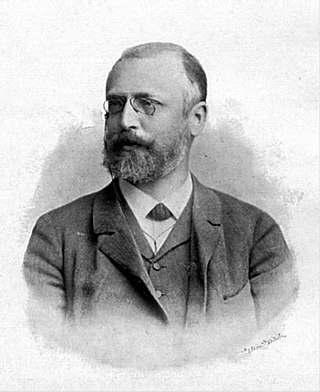Top Qs
Timeline
Chat
Perspective
Eduard Weyr
Czech mathematician From Wikipedia, the free encyclopedia
Remove ads
Eduard Weyr (22 June 1852 – 23 July 1903) was a Czech mathematician. Today he is chiefly remembered as the discoverer of a certain canonical form for square matrices over algebraically closed fields.[1][2] Weyr presented this form briefly in a paper published in 1885.[3] He followed it up with a more elaborate treatment in a paper published in 1890.[4] This particular canonical form has been named as the Weyr canonical form in a paper by Shapiro published in The American Mathematical Monthly in 1999.[5] Previously, this form has been variously called as modified Jordan form, reordered Jordan form, second Jordan form, and H-form.[6]

Remove ads
Life
Weyr was born in Prague, Bohemia, Austria-Hungary on 22 June 1852.[7] His father was a mathematician at a secondary school in Prague, and his older brother, Emil Weyr, was also a mathematician. Weyr studied at Prague Polytechnic and Charles-Ferdinand University in Prague. He received his doctorate from the University of Göttingen in 1873 with dissertation Über algebraische Raumcurven.[8] After a short spell in Paris studying under Charles Hermite and Joseph Alfred Serret, he returned to Prague where he eventually became a professor at Charles-Ferdinand University. Weyr also published research in geometry, in particular projective and differential geometry.[1] In 1893 in Chicago, his paper Sur l'équation des lignes géodésiques was read (but not by him) at the International Congress of Mathematicians held in connection with the World's Columbian Exposition.[9]
He died in Záboří nad Labem on 23 July 1903.[7]
Remove ads
Weyr canonical form
The image shows an example of a general Weyr matrix consisting of two blocks each of which is a basic Weyr matrix. The basic Weyr matrix in the top-left corner has the structure (4,2,1) and the other one has the structure (2,2,1,1).

References
Wikiwand - on
Seamless Wikipedia browsing. On steroids.
Remove ads
